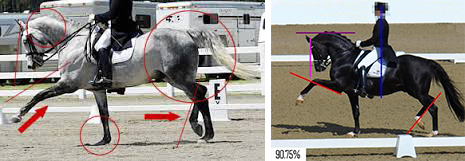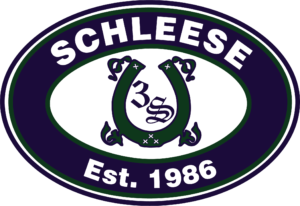Speaking the Truth in Love – A Western Dressage Judge’s and Trainer’s Perspective
I am going to cheat a little this week with my blog since we have been extraordinarily busy with wedding preparations for my daughter’s wedding and have been very short on time. However – having said that – I had intended to share Anna’s comments with you already anyway because she is so right with her insights that what she says bears repeating and is in complete alignment with my own opinions on this matter, which are represented at the bottom of her article. Recently there have been a number of Facebook posts which have totally taken the sport of dressage into the ridiculous – when it should be carried into the sublime. The videos of people warming up their horses are almost tantamount to animal abuse.
A Western dressage judge’s and trainer’s perspective
Anna Schriebl is an NAWD Licensed Judge, as well as a Western dressage and traditional dressage trainer. She and her husband, Marty, operate Patriot Farm LLC in Ivor, Virginia.
“Ribbons, scores, end-of-year competition awards—oh my! This can sometimes become the Holy Grail of riders and trainers. Any instructor or judge that tells them they are missing the mark becomes vilified and a pariah of their small horse community. Striking a balance in helping the rider become a better horseman and the horse a healthier, happier mount can be a challenge.
The avid horse lover wants to be a partner and helpmate to their horse. They strive to make the world a better place for horses and glean every bit of information they can from what they perceive as reliable sources. One of those sources is their trainer. But who is the trainer listening to if they want the accolades of showing? The horse show judge is the answer to that question.
I’ve always said that judges are the guardians of the sport, and I believe judges are in a very good position to ensure the correct training and welfare of our horse sport partners. Training will go the way of judging—by that, I mean trainers that chase ribbons will acquiesce to a judge’s performance standards in order to post those “selfies” with ribbons and trophies.
Those performance standards can come in the form of strict adherence to quality of gaits and movements, lack of tension and a harmonious team with a happy horse athlete. They can also come in the form of so-called “Santa Claus” judging by a judge who freely gives high marks to riders they know—or don’t know—are substandard. Perhaps the judge is uneducated or perhaps they want to get hired back again and are afraid to judge correctly.
So do judges take the path of the Grinch or Santa Claus? I believe there is a balance between being stingy with points and sprinkling fairy dust over the movements so the numbers magically multiply. Trainers and riders are more than their show record. This is the first fact to establish. I know many very good trainers who don’t show but enjoy the process of bringing a horse up through the levels. Unfortunately, I also know many trainers that show an exhausted, poorly trained horse every weekend for self-glory. That same tired schoolmaster/push-button horse is used for rider after rider to get their medals and awards and the rider is left with the false perception that they earned the scores because of their skillful riding. And here is where we must separate the wheat from the chaff as judges because many uneducated riders may choose their trainer based only on their and their students’ show records.
Speaking the truth in love, as I put it, means that the latter group of trainers and riders will hear kindly, but firmly, that they are not meeting standards and need to go home and get help with the basics. If all judges remain true to their craft, the cycle of endless rewards for substandard performance will halt and trainers will make an effort to improve their education. However, judges must stand united. If some throw high points at anyone who enters the ring and others remain diligent, the ribbon chasers will show under the judge who is more lenient. These are the facts of horse show life.
For our part, judges must remove any memory bias and judge what is in front of us. That means if a pair that normally does an outstanding job in the arena has a bad day, the scores should reflect that.
Our sport is one that has a large community of dressage enthusiasts with a very educated eye. They know a bad ride when they see one—no matter who the rider is. The judge is the horse and rider’s ally, not their enemy. An ally gives honest analysis of the good and the bad in a performance. We can make a difference for the better in the horse community by remaining fair, unbiased and, most of all, kindly honest. “

I personally have pretty much given up on going to horse shows anymore – for many reasons:
- Training methods that go against classical principals.
- Ignorance of properly fitting saddles – many riders think their saddles are fitting but they are often lying outside of the SSA (Saddle Support Area) and lie on the kidneys and on the shoulder – don’t know and don’t care because the name of the game is bringing the horse up as quickly as possible to sell it for the most possible profit. While we all have to make a living in the industry, I cannot watch anymore how the horse has to pay the price for the ignorance or greed of some of the competitive riders. Seeing the results of some of the trainers we choose to work with, and how their horses have changed positively in their musculature –no nerve lines, no dip in front of the SI joint, the softness in the eyes and how relaxed the horses are in the barn and at work keeps me believing that there are still some professionals who understand proper classical training and holistic horsemanship and are doing it for the right reasons.
- True partnership and harmony between horse and rider is important, and these trainers understand the importance of scientifically researched and proven theories of saddle fit and discard the opinions of the uneducated peanut gallery or the financial influence of the business world.
- It’s great to hear that their grand prix horses which were sold to clients will still compete on the adult amateur circuit in their late teens and early twenties.
- Where are the superstars from yesterday? What happened to these horses? Most of them mysteriously disappear somewhere…never to be heard about again. Put down at young ages.
- We live in the time of speed – Fritz Thiedemann said it takes three human lifespans to learn how to ride properly. The tightly controlled methodology back in the cavalry days, the rule book as it still stands today is often ignored for the sake of expediency. Shortcuts are taken – we love to see shows, we love to see the spectacular extended trot, which is something that even a lay audience thrills to. Most likely many horse owners do not know or have even heard about the rule books which riders should use to ride and judges should use to judge. Not knowing what to look for, these leg movers are impressive but little thought is given to the results – something like the Spanish walk and drama during a bull fight. I can see how the judges are easily influenced by audience reaction and visual impact. But we need to remove the stigma of being blacklisted for being honest.
What do you think?

